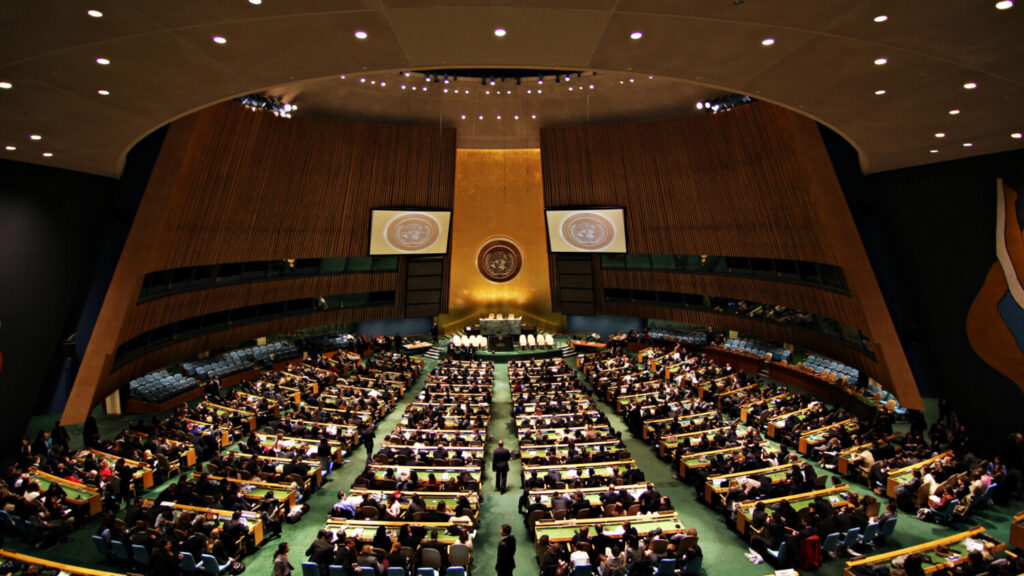The Recent Escalation in Middle Eastern Tensions and its Impacts
Escalation of Hostilities Between Iran and Israel
In mid-June 2025, hostilities between Iran and Israel escalated markedly. On 13th June, Israel initiated Operation Rising Lion, a comprehensive aerial and drone offensive targeting more than 100 Iranian military and nuclear-associated sites. The operation reportedly resulted in 78 fatalities, including high-ranking commanders of the Islamic Revolutionary Guard Corps (IRGC) and several nuclear scientists (Citizen of Europe, 2025). This marked the most overt and extensive military confrontation between the two states in modern history (Citizen of Europe, 2025).
In retaliation, Iran launched a series of missile and drone strikes against Israeli urban centres and military installations. One of the most significant incidents occurred on 19th June, when a drone strike impacted Soroka Medical Centre in Beersheba, resulting in multiple civilian casualties (The Washington Post, 2025). This event represented one of the most prominent Iranian attacks on Israeli civilian infrastructure to date.
The intensification of hostilities also understandably derailed diplomatic efforts, notably prompting the suspension of scheduled nuclear negotiations between the United States and Iran in Oman, talks that had been viewed as a potential diplomatic off-ramp (Arab News, 2025).
American Intervention
On 22nd June, the United States joined Israel in conducting coordinated strikes against Iranian nuclear infrastructure. U.S. B-2 strategic bombers reportedly targeted key sites associated with uranium enrichment, including Fordow and Natanz. In a late-night national address, President Trump proclaimed the operation to be a “spectacular military success,” asserting that Iran’s principal enrichment facilities had been “completely and totally obliterated” (Financial Times, 2025). The decision to authorise direct military action against Iran also represented a significant strategic inflection point and a calculated political gamble for Trump, whose re-election campaign had emphasised a commitment to ending “forever wars” and pursuing diplomatic restraint (Financial Times, 2025).
The Expansion of the Theatre of Conflict and Civilian Targeting
Following the direct U.S. intervention, on 23rd June, Iran launched a series of ballistic missiles targeting Al Udeid Air Base in Qatar, the largest United States military installation in the Middle East (Al Jazeera, 2025). Although the majority of the projectiles were reportedly intercepted, the strike signalled Tehran’s growing willingness to expand the geographic scope of the conflict.
Earlier that same day, in what appeared to be a symbolic manoeuvre, Israeli forces conducted an airstrike on Evin Prison in Tehran, a facility internationally recognised for detaining political dissidents and foreign nationals (Al Jazeera, 2025). Iranian state media released surveillance footage purportedly showing the facility’s main gate being destroyed in the attack (Al Jazeera, 2025). The timing and target of this operation suggested an intention to convey psychological and political messages both domestically and internationally.
The Brokering of a Fragile Ceasefire
Following twelve days of escalating hostilities between Israel and Iran, a tenuous ceasefire was brokered by U.S. President Donald Trump, halting a conflict that had pushed the region perilously close to a broader war (Gulf News, 2025). In a public address, Trump remarked that the “war seems to be over — for now,” signalling a temporary pause in what had become an increasingly volatile confrontation (Gulf News, 2025).
In the immediate aftermath, both Israel and Iran moved swiftly to assert narratives of strategic success. An Israeli military spokesperson claimed that the strikes had set back Iran’s nuclear program by “many years,” while Prime Minister Benjamin Netanyahu hailed the outcome as a historic victory (CBS News, 2025).
Meanwhile, Iran portrayed its ballistic missile strike on Al Udeid Air Base in Qatar, home to thousands of U.S. military personnel, as a success, despite the fact that none of the missiles reportedly struck their intended targets (CBS News, 2025). Concurrently, officials in the Islamic Republic announced their intention not only to resume uranium enrichment but to accelerate it, without any oversight from the International Atomic Energy Agency (IAEA), the United Nations’ nuclear watchdog (CBS News, 2025).
Despite the formal ceasefire, hostilities resumed. On Sunday, Israel launched a retaliatory strike following claims that two Iranian ballistic missiles had breached its airspace. Although the projectiles were intercepted, Israel targeted a radar installation near Tehran in response (Gulf News, 2025). This action reportedly provoked frustration from President Trump, who stated he was “really unhappy that Israel went out this morning” (Gulf News, 2025).
While the ceasefire has temporarily reduced the scale of direct military confrontation, the underlying tensions remain acute. Both nations continue to operate in a climate of heightened alert, underscoring the fragility of the truce and the complexity of charting a path toward durable peace.
The Domestic Fallout in Iran
Following reports of an unprecedented Israeli infiltration of Iran’s security apparatus, allegedly facilitating a series of high-profile assassinations during the conflict (BBC News, 2025), Iranian authorities appear intent on consolidating internal control and projecting an image of strength. In a recent escalation, the government executed three Kurdish men accused of collaborating with Mossad and launched a sweeping campaign of arrests targeting individuals suspected of foreign intelligence affiliations (BBC News, 2025). These measures reflect a heightened atmosphere of internal suspicion and repression within Iran’s security establishment, underscoring the regime’s efforts to reassert dominance in the face of perceived subversion.
Is the UK Preparing for Major Conflict?
In response to escalating tensions across the Middle East and the broader international system, states have increasingly sought to assess potential risks and bolster their preparedness for major conflict scenarios. The UK has been no exception. As Prime Minister Keir Starmer remarked, the government is working to “navigate this era of radical uncertainty” (Independent, 2025). Reflecting this posture, the National Security Strategy published on 24th June 2025 emphasises the need to prepare for the possibility of a “wartime scenario” on the “UK homeland” for the first time in many years (Sky News, 2025a).
Complementing the alarming tone of the newly published National Security Strategy, the UK has moved swiftly to translate strategic rhetoric into concrete action. As part of a broader initiative to enhance national defence capabilities, the government has announced plans to increase defence spending to 5% of GDP by 2035 (Independent, 2025). This is more than double the 2025 level, as shown in Figure 1. In support of this objective, the UK has confirmed the procurement of F-35 stealth aircraft with the capability to carry United States nuclear warheads, thereby restoring the Royal Air Force’s capacity for airborne nuclear delivery for the first time since the 1990s (Sky News, 2025b). These developments underscore the growing sense of unease within British defence policy circles and reflect the broader climate of mounting global insecurity.
Bibliography
Al Jazeera. (2025). “US-Israel-Iran conflict: List of key events, June 23, 2025”. Al Jazeera. Published 23rd June, 2025. Available at: US-Israel-Iran conflict: List of key events, June 23, 2025 | Israel-Iran conflict News | Al Jazeera
Arab News. (2025). “Timeline of tensions and hostilities between Israel and Iran”. Arab News. Published 15th June, 2025. Available at: Timeline of tensions and hostilities between Israel and Iran
BBC News. (2025). “Iran carries out wave of arrests and executions in wake of Israel conflict”. BBC News. Published 26th June, 2025. Available at: Iran carries out wave of arrests and executions in wake of Israel conflict – BBC News
CBS News. (2025). “Israel-Iran ceasefire holds, offering hope, but also uncertainty as Iran threatens to accelerate nuclear work”. CBS News. Published 25th June, 2025. Available at: Israel-Iran ceasefire holds, offering hope, but also uncertainty as Iran threatens to accelerate nuclear work – CBS News
Citizen of Europe. (2025). “The Escalating Israel‐Iran Conflict: A Verified Timeline of Nuclear Confrontation and Direct Warfare”. Citizen of Europe. Published 14th June, 2025. Available at: Israel Iran Conflict Timeline June 15th Updated
Financial Times. (2025). “US bombs nuclear sites in Iran”. Financial Times. Published 22nd June, 2025. Available at: US bombs nuclear sites in Iran
Gulf News. (2025). “Israel-Iran ceasefire holds — but is the conflict really over? What comes next?”. Gulf News. Published 25th June, 2025. Available at: Israel-Iran ceasefire holds — but is the conflict really over? What comes next?
Independent. (2025). “Starmer pledges to spend 5% of GDP on national security and defence by 2035”. Independent. Published 24th June, 2025. Available at: Starmer pledges to spend 5% of GDP on national security and defence by 2035 | The Independent
Sky News. (2025a). “UK must ‘actively prepare’ for potential of war in the ‘homeland’, review warns”. Sky News. Published 24th June, 2025. Available at: UK must ‘actively prepare’ for potential of war in the ‘homeland’, review warns | Politics News | Sky News
Sky News. (2025b). “UK to buy F-35 stealth jets that can carry US nuclear warheads”. Sky News. Published 25th June, 2025. Available at: UK to buy F-35 stealth jets that can carry US nuclear warheads | UK News | Sky News
The Washington Post. (2025). “Iranian missile strikes hospital, prompting Israeli threat of retaliation”. The Washington Post. Published 19th June, 2025. Available at: Iranian strikes Israeli hospital, prompting threat of retaliation – The Washington Post



